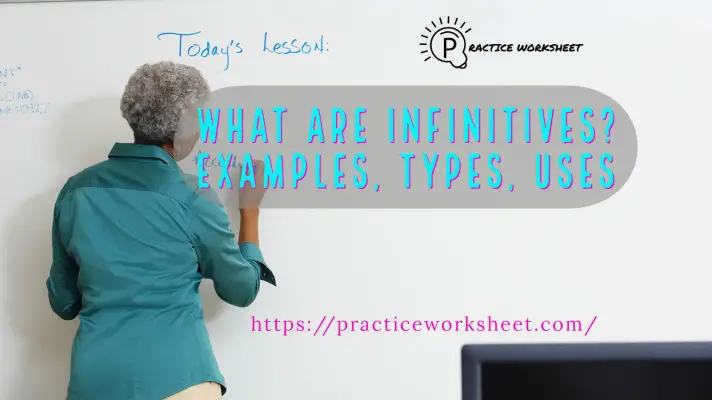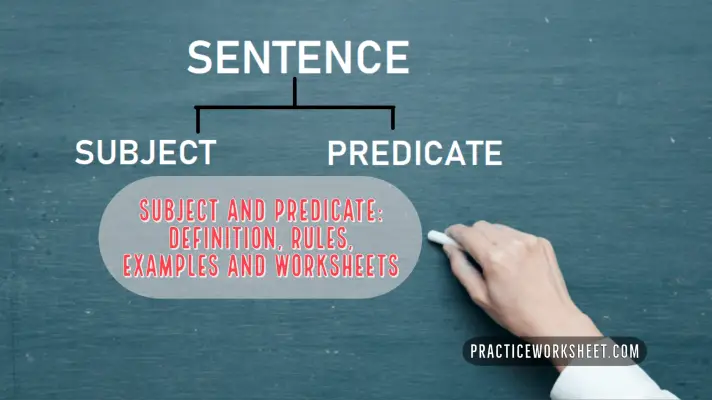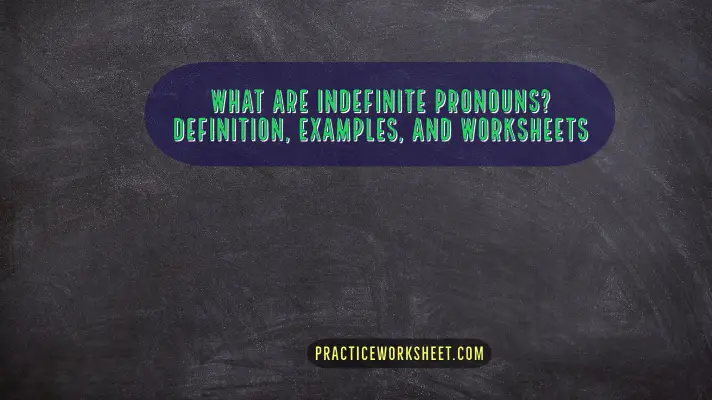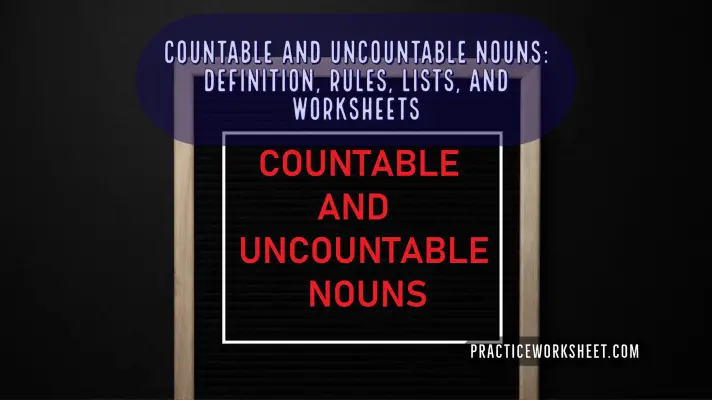Verbs in the English language are categorized into two major categories depending on how they function in a sentence. They are transitive and intransitive verbs. Transitive verbs take one or more objects in a sentence. They need to transfer their action to someone or something which is the object of the sentence. On the other hand, Intransitive verbs take no objects in a sentence. So, it is completely the opposite of transitive verbs. In this article, we will explore more details about transitive and intransitive verbs, their examples, differences, and exercises.
What is a transitive verb?
A transitive verb requires an object to express a complete thought or an action. It requires a noun, phrase or pronoun that refers to the person or a thing affected by the action of the transitive verb. For example:
- The class starts is an intransitive sentence.
- The teacher starts the class is a transitive sentence.
A transitive verb accepts one or more objects, unlike an intransitive verb. It is defined by the action it exerts on the objects. There are two characteristics of a transitive verb. Firstly, a transitive verb is an action verb that expresses activities like “kick”, “paint”, “write”, “eat”, etc. Secondly, a Transitive verb should have a direct object that can define something or someone who is receiving the transitive verb’s action. Basically, it is difficult to recognize a transitive verb because it uses an object receiving the action and it exerts action on the object.
A Latin word known as trans which means to go across defines that the word transitive is derived from the word trans That means it has to transfer its action to something or someone which is known as an object. A transitive verb can be active or passive. A transitive verb can have one object, two objects or three objects known as mono-transitive verbs, di-transitive verbs and Tri-transitive verbs.
A transitive verb must transfer its action to an object in order to complete the sentence. For example : John caught (incomplete). The meaning is incomplete when the action does not transition through the verb to an object. John caught a whelk. (complete)
The transition does not always happen to a direct object, the transition may take place to an indirect object as well. For example: She paid her. This is a transitive verb with an indirect object. The sentence still make sense as the action transition through the verb to an indirect object.
Few transitive verbs are accept, avoid, beat, drag, dress, carry, fascinate, grab, key, lighten, Intimidate etc.
Examples and Rules of a transitive verb
There are so many examples of a transitive verb. Basically, one can identify a transitive verb by its action on the object. For example, “Please bring water”. Here in this sentence, the transitive verb is “bring”, its object is “water”, the thing which is being brought. Few other examples of transitive verbs are listed below:
- I was eating delicious food for dinner last night.
- The people watched the game from the bleachers.
- Please carry the table for me.
- John kicked the ball.
- He didn’t take anything from the cupboard.
- I will send the note from the principal.
- Please bring tea.
- The baby threw the ball.
- I caught a fever.
- Women carry water to their village.
- She loves ice cream.
- Please convey the message.
- I will send the note to the teacher.
The above mentioned examples shows that transitive verbs need to confer its action upon the object, for example:
- Carry: you need to carry something
- Bring: you need to bring something
- Threw: you need to throw something
- Kick: you need to kick something
- convey: you need to convey something
Each of the above sentences has transitive verb which has direct or indirect object that completes the verbs action. If there is no object then result would be illogical, for example, “Ayush conveyed”. Conveyed what? In simple words, one can conclude that in order to know whether a verb is Transitive, one can check how the transitive verb is connected with other words in the sentence.
Therefore, it is important for a person to know what object is used in the sentence. Knowing the object helps the verb in transferring the meaning and thereby acquires transitivity.
Mono-transitive verbs take only one object. This single object is called its direct object. Few examples of mono-transitive verbs are:
- I rode my car to get here.
- I heard he’s writing a book.
Di-transitive verbs take only two objects, one is a direct object and another one is an indirect object. Few examples of ditransitive verbs are:
- I sent my sister a letter.
- I sent a letter to my sister.
Tri-transitive verbs take three objects. The third object is basically formed from a prepositional Phrase that receive the action of the verb by way of the indirect object. Few examples of tri-transitive verbs are:
- We will make you CEO for 50000 dollars.
- I bet you 100 bucks, our company will win this project.
What is an intransitive verb?
An intransitive verb is a verb that does not need to transfer action on any object. That means it describes an action that does not happen to something or someone. It does not take a direct object. Intransitive verbs only involve a subject. It is basically an action verb with no direct object. Intransitive verbs do not need an object to complete the sentence.
An intransitive verb is just an opposite of transitive verb. Such verbs can be identified as those verbs that cannot be followed by who or what. In simple language, the definition of intransitive verbs are not transitive. The first use of intransitive was found in the year 1612.
Examples of intransitive verbs and their rules.
As we know, an intransitive verb can make sense without any object. Few examples of intransitive verbs are:
- He cried.
- I work for a large organization in London.
- We slept for hours.
- They live in Paris.
- The prime minister waved to the crowds.
- She recovered after a long illness.
- The horse runs.
- She died.
- When did they arrive?
From the above-mentioned examples of intransitive verbs, it is quite clear that such verbs do not require any objects to make sense to a sentence and all of these can end a sentence. However, it is to be noted that these intransitive verbs are often followed by adverbs or prepositions. For example:
- It snowed.
- Did she arrive on time?
- She cried.
- She died on Monday night.
Difference between transitive and intransitive verb
| Transitive Verb | Intransitive verb |
| It is followed by a direct object which is a noun, pronoun or a direct phrase that receives the action of the verb. | No object is required to receive the action |
| Subject + action verb + object | Subject + verb + prepositional phrase |
| Example: Jessica sharpened the pencil. | He ran |
| Sharpened is a transitive verb and the pencil is the object in the sentence that is receiving the action of the verb. | Ran what? There is no answer to this question. Here the subject is performing the action of the verb and nothing receives the action. |
| Action is transferred to the receiving object. | No action is transferred to the object even if a phrase is followed by the verb such as He ran (across the field). Still didn’t answer where across the field. |
| Ask what / whom to subject + verb and if you get a noun or pronoun as an answer then it is a transitive verb. | There is no answer to an intransitive verb. |
| Transitive verbs can be used with direct object and indirect object. | No direct and indirect object. |
| A sentence with transitive Verb can be changed into passive voice. | A sentence with intransitive verb cannot be changed into passive voice. |
| Examples : I admire your courage, We need to maintain product quality, She loves animals. | I work for a large organization in London, They laughed uncontrollably, The baby was crying. |
| In transitive verb, the direct object typically answers what or whom question | Such verbs doesn’t answer what or whom but answers to the question like where, when, How long or how. |
List of transitive verbs:
Below are the list of a few transitive verbs:
- Accept
- Define
- Describe
- Ask
- Acknowledge
- Bend
- Avoid
- Dress
- Encourage
- Fascinate
- Convert
- Crack
- Contradict
- Keep
- Key
- Kill
- Handle
- Hurry
- Help
- Limit
List of Intransitive verbs:
Below are the list of few transitive verbs:
- Act
- Adapt
- Escape
- Dance
- Fly
- Grow
- Float
- Jump
- Lead
- Lean
- Crawl
- Learn
- Move
- Party
- Walk
- Wave
- Work
- Swim
- Spin
- Twist
Transitive and Intransitive Verbs Worksheets
Now that you have got enough details along with examples of transitive and intransitive verbs, Let’s move on to the next section on transitive and intransitive verbs worksheets.
A. Underline the verb in the given sentences and state if that is transitive or intransitive?
- He paid the exam fee last week.
- I reached the park to find that nobody is present.
- Don’t disturb Aharsi, he is studying.
- For the last one hour, they are playing.
- The bus stopped suddenly.
- They moved to chairs next to each other.
- Swarnali wrote a poem on Diwali.
- Advik always finishes his breakfast after his classes are over.
- If it rains, use the umbrella kept in your bag.
- The boy sneezed so hard that he fell from his bench.





![Singular and Plural Nouns: Definition, Rules, Examples, and Worksheets [With PDF] Singular and Plural Nouns](https://practiceworksheet.com/wp-content/uploads/2020/11/Singular-and-Plural-Nouns.png)

